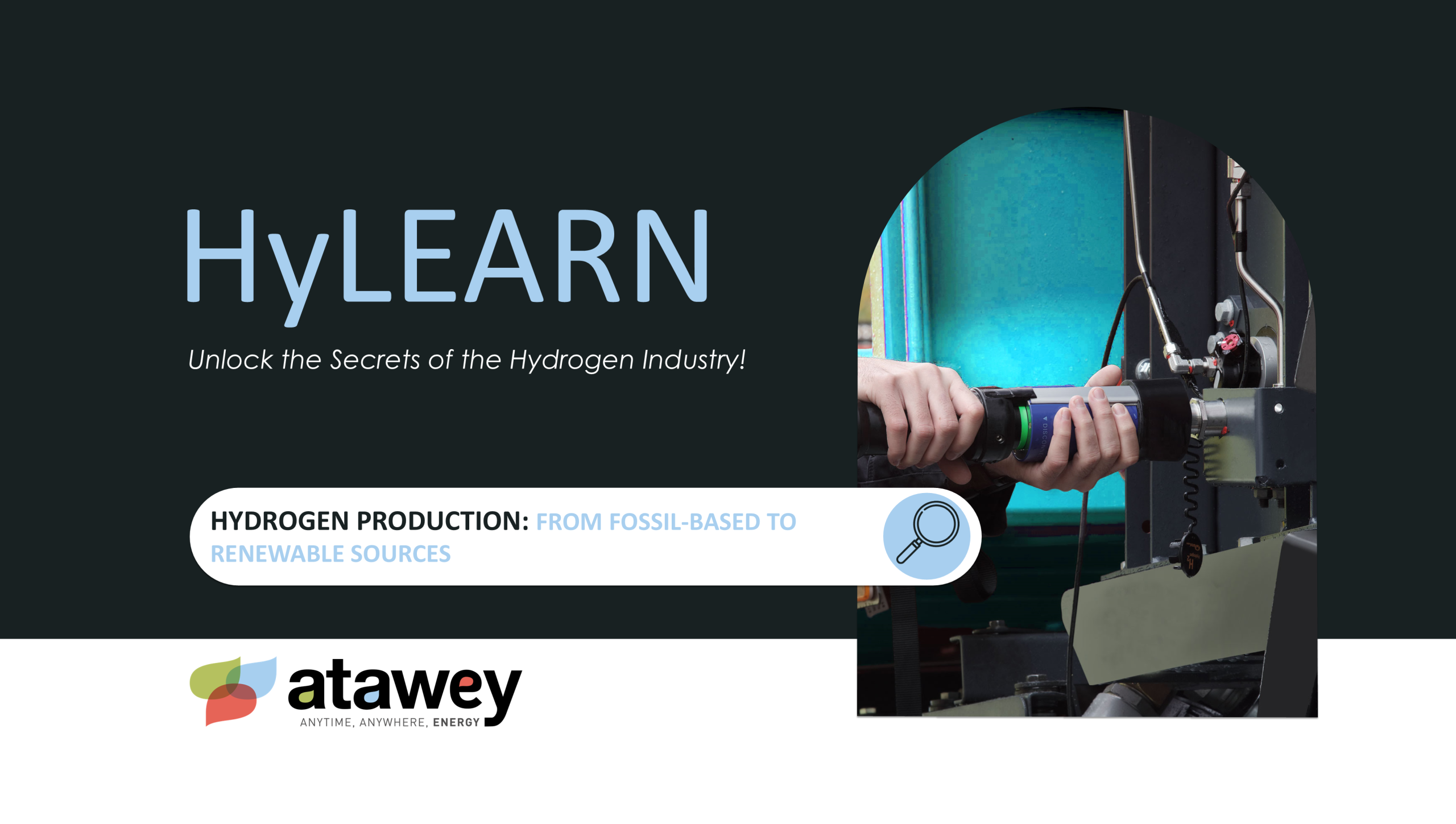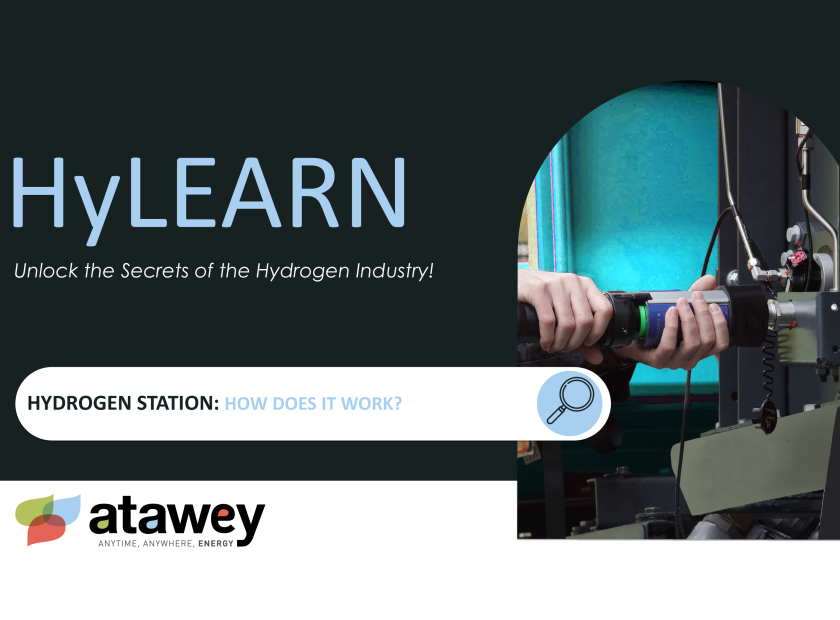
Hydrogen Production: From Fossil-Based to Renewable Sources
Hydrogen is a chemical element abundantly present in the universe, but it is rarely found in its pure form on Earth. Unlike fossil fuels such as coal or oil, hydrogen must be produced from other primary energy sources. This makes it an energy carrier—much like electricity—with significant potential, as it can serve as a clean and sustainable alternative to fossil fuels across a wide range of sectors, including industry, power generation, and transport.
Using hydrogen as an energy source can help reduce greenhouse gas emissions and improve air quality. Moreover, hydrogen is easy to store and transport, making it a flexible and versatile energy solution. In short, hydrogen stands out as a promising energy carrier for the transition toward a cleaner and more sustainable economy.
The Various Methods of Hydrogen Production: From Fossil Resources to Water Electrolysis
Hydrogen production is emerging as a key industry in meeting society’s growing demand for clean and renewable energy.
An Introduction to Hydrogen: Properties and Potential
Hydrogen is a chemical element made up of one proton and one electron. The hydrogen molecule (H₂), also known as dihydrogen, consists of two hydrogen atoms. In common usage, the term “hydrogen” typically refers to dihydrogen (H₂).
What is hydrogen energy used for in France?
In France, hydrogen is primarily used in the chemical industry and oil refining. It also serves as a key feedstock for the production of ammonia (used in fertilizers) and methanol.
In the context of the energy transition, hydrogen energy holds the potential to be leveraged for many additional applications in the future.
- As a clean fuel: when combined with a fuel cell, hydrogen undergoes a reaction that generates electricity. It acts as a clean energy carrier, making it possible to power an electric motor—this is the operating principle behind hydrogen-powered vehicles.
- To store electricity, helping to optimise power generation capacity and address the intermittency of renewable energy sources.
- In the industrial sector, to replace fossil fuel use and supply industries with low-carbon energy.
How Is Hydrogen Produced? The Production Process
There are several methods for producing hydrogen. Today, the most widely used process is steam methane reforming (SMR). This technique relies on fossil fuels such as natural gas or biogas, using steam to break the carbon-hydrogen bonds in methane. Through two successive chemical reactions, the atoms are separated and recombined into dihydrogen (H₂) and carbon dioxide (CO₂). The resulting gas mixture is then purified to obtain “grey” hydrogen with a purity of approximately 99.9%. While steam reforming offers a competitive cost advantage, it has a significant carbon footprint—generating more than 10 kg of CO₂ for every kilogram of grey hydrogen produced.
Coal gasification was also widely used in the 19th century to produce town gas and liquid fuels for military purposes. When coal is subjected to extremely high temperatures, it vaporises, and the carbon it contains reacts with steam to produce synthesis gas, or “syngas”. Hydrogen can then be extracted from the syngas after impurities and CO₂ are removed. This method, which also generates high levels of CO₂ emissions, is still used today in countries with a strong coal-based industrial heritage—such as China, the United States, and Germany—to produce what is known as “grey” hydrogen on an industrial scale.
However, these hydrogen production methods are increasingly being called into question due to their significant environmental impact. As hydrogen mobility continues to gain momentum, several alternative pathways are currently under development—most notably hydrogen production through electrolysis.
Hydrogen Produced by Electrolysis: A Promising Alternative to Fossil Fuels
How Is Green Hydrogen Produced?
Green hydrogen is considered one of the key components of the energy transition toward cleaner and more sustainable energy sources. In this context, water electrolysis is a promising method for producing hydrogen using renewable energy sources such as solar or wind power. This technology triggers a reaction that splits water molecules into dihydrogen and dioxygen by applying an electric current. In practical terms, two molecules of water (H₂O) yield two molecules of hydrogen gas (H₂) and one molecule of oxygen (O₂).
2H₂O → 2H₂ + O₂
Did You Know? Electrolysers Are Key to Producing Renewable Hydrogen
When the electrolyser is powered by renewable electricity, the hydrogen produced is considered “green,” as it generates no greenhouse gas emissions from production through to end use.
Water electrolysis is therefore a key technology for green hydrogen production, helping to reduce its carbon footprint and providing a sustainable transport solution for a cleaner future.
The Electrolyser: A Key Technology at the Heart of the Compact S Hydrogen Station’s Low-Carbon Hydrogen Production System by Atawey
Capable of integrating an electrolyser, Atawey’s Compact S hydrogen station can produce up to 2 kg of hydrogen per day—equivalent to approximately 200 km of driving range for a light-duty vehicle. By adopting this approach, the compact station becomes an all-in-one solution: it combines production, storage, compression, distribution, and the Human-Machine Interface (HMI) in a single integrated unit.
The station is connected to the mains water supply and uses alkaline electrolysis technology to split water molecules. Once the water molecule is separated, the low-carbon hydrogen is stored, while the oxygen is released into the atmosphere. When the station reaches its maximum storage capacity, hydrogen production is automatically halted.
Did You Know?
The Compact S station is the ideal solution for stakeholders located in island or remote areas!
The electrolysers integrated into the Compact S stations were designed by Atawey and are manufactured in France, in Saint-Étienne.
A Compact S Station Commissioned in Guadeloupe
Delivered to Guadeloupe at the end of 2022, the Compact S station will serve as a seed station for the company SARA.
Capable of producing 2 kg of hydrogen per day and dispensing up to 6 kg in a single day, this station will supply two 700-bar vehicles.
This station is the first of its kind in Guadeloupe and was installed in March in the Jarry area. It is powered by renewable energy, supplied through photovoltaic panels.
Challenges to Overcome for Accelerating the Energy Transition: Replacing Steam Methane Reforming
Steam methane reforming, currently the most widely used method for producing low-carbon hydrogen, is set to be gradually phased out as part of the ecological transition due to its high CO₂ emissions. Water electrolysis is regarded as the most advanced alternative technology, although hydrogen production costs remain high—approximately three times more than steam reforming—and are heavily dependent on electricity prices.
The Compact S stations developed by Atawey use an integrated electrolyser to produce hydrogen. For the other stations in the range—namely the Compact M and the Evolutive hydrogen stations—an electrolyser can be installed alongside the station to enable on-site hydrogen production.
More About Hydrogen Production





